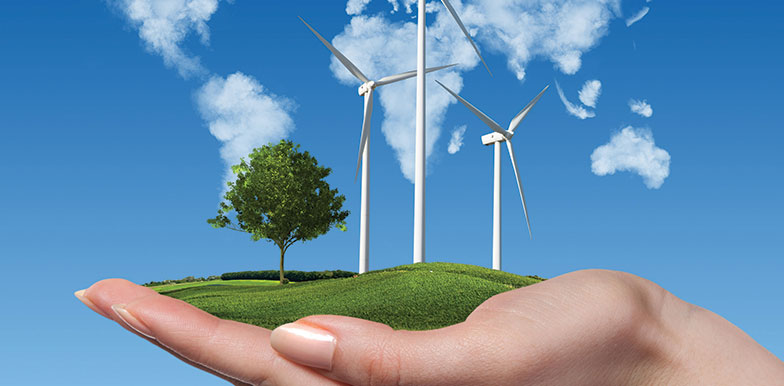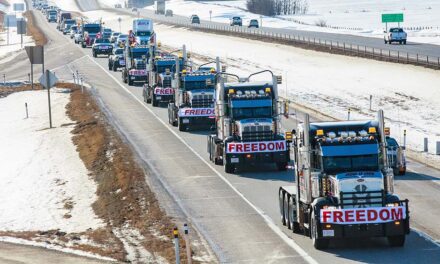In today’s world, finding common ground is not always an easy task. But here’s one thing all Americans can agree on: we want to have clean air and a healthy economy. Because of technologies like wind energy, we don’t have to choose one over the other.
Growing wind power powers American job creation and economic development, while over time increasing U.S. energy independence by using a homegrown, emission-free electricity source.
America’s 100,000—strong wind power workforce
Over 100,000 Americans are employed by the wind industry today, across all 50 states. Many of these are manufacturing positions at the nation’s more than 500 factories that build the blades, towers, and other parts that go into wind turbines. Over 25,000 of these U.S. workers have well-paying jobs at wind manufacturing facilities, breathing new life into an economic sector that has struggled for decades.
“I’ve got very strong high moral and Christian values, and I think they line up very well with this kind of energy,” says Blake Kasper, a Quality Supervisor at Broadwind Energy in Abilene, Texas, where he helps build wind turbine towers. “There’s just so much work, orders keep pumping in. The opportunities are limitless.”
Importantly, many of these new manufacturing jobs are found across the Rust Belt, hiring workers where they’re needed the most. Ohio leads the way with 62 wind factories, while Pennsylvania, Wisconsin and Michigan boast 26 each.
And these jobs will continue growing. Wind manufacturing jobs will grow to 33,000 by the end of President Trump’s first term, according to recent analysis from Navigant consulting. Because 99 percent of wind farms are built in rural areas, many of the jobs that wind creates belong to those living in our country’s agricultural areas. This offers new career opportunities in communities where those can be scarce.
For example, a wind turbine technician is by far America’s fastest growing job, according to the U.S. Bureau of Labor Statistics. The profession is projected to grow by 108 percent over the next decade, far outpacing the next job on the list, occupational therapy assistant, only increasing by 42 percent. With nearly all of the country’s 52,000, and counting, wind turbines in rural areas, there is strong demand for more technicians to keep them running smoothly.
The U.S. wind industry also proudly offers good career opportunities to the men and women who serve our country— veterans find wind energy jobs at a rate 50 percent higher than the average industry.
This massive U.S. job creation will not stop anytime soon. By 2020, there could by 248,000 wind-related jobs according to Navigant Consulting.
Investing in rural America
You don’t need to have a wind job to realize the economic benefits of wind power, however. Wind farms bring new resources into rural areas in a nearly unmatched scale.
Nearly all of the country’s wind projects are built on private land, which means farmers and ranchers get lease payments in exchange for hosting wind turbines. These payments totaled $245 million in 2016 alone, and approximately $175 million of that total went to landowners in low-income counties. That number will keep increasing as the U.S. wind industry continues to grow.
Lease payments offer income farmers and ranchers can count on when commodity prices fluctuate or bad weather hurts the harvest. For many families, these payments can make the difference between continuing a multi-generation tradition and ending a way of life. That’s why some call wind energy their “drought-proof cash crop.”
However, entire communities benefit from these projects, not just wind farm landlords.
Wind farms are often a county’s largest taxpayers, so they add substantial revenue to the local budget. This income helps pay teacher salaries, fix roads and buy new ambulances. Navigant projects new wind projects will create $8 billion of added sales, income and property tax payments over just the next four years, on top of payments coming from projects that already exist. In all, wind will drive another $85 billion of economic activity between now and 2020.
“Wind energy, the fastest-growing source of electricity in the U.S., is transforming low-income rural areas in ways not seen since the federal government gave land to homesteaders 150 years ago,” the Omaha World-Herald recently reported.
Clean air, healthy communities
Wind energy provides all of these economic benefits while also playing a major role in creating cleaner air.
By reducing harmful air pollutants like sulfur dioxide and nitrogen oxides that cause smog and trigger asthma attacks, wind created $7.3 billion in public health savings in 2015 alone. By 2050, wind could prevent a total of 22,000 premature deaths and save $108 billion in public health costs by reducing air pollution, according to the Department of Energy.
“Unhealthy air is hazardous to our families and even can threaten life itself,” according to the American Lung Association’s (ALA) Healthy Air Campaign. That is why the ALA has adopted as one of its goals the transition to a clean energy future, “to protect all people from the harm of air pollution.” Wind’s clean air role should grow in the years to come.
Today, the U.S. has enough installed wind capacity to power 24 million homes, and it is on track to supply 10 percent of the country’s electricity by 2020.
Substantial job creation, billions of dollars of economic investment and clearer air—American wind power helps us create the healthy economy and environment we all want.











